Art World
From Frog Art to a Socialist Shoe Store, These Are the 8 Unmissable Artworks of documenta 14 in Kassel
From highly political videos and performances to delicate and meditative collages, these are the best in show.
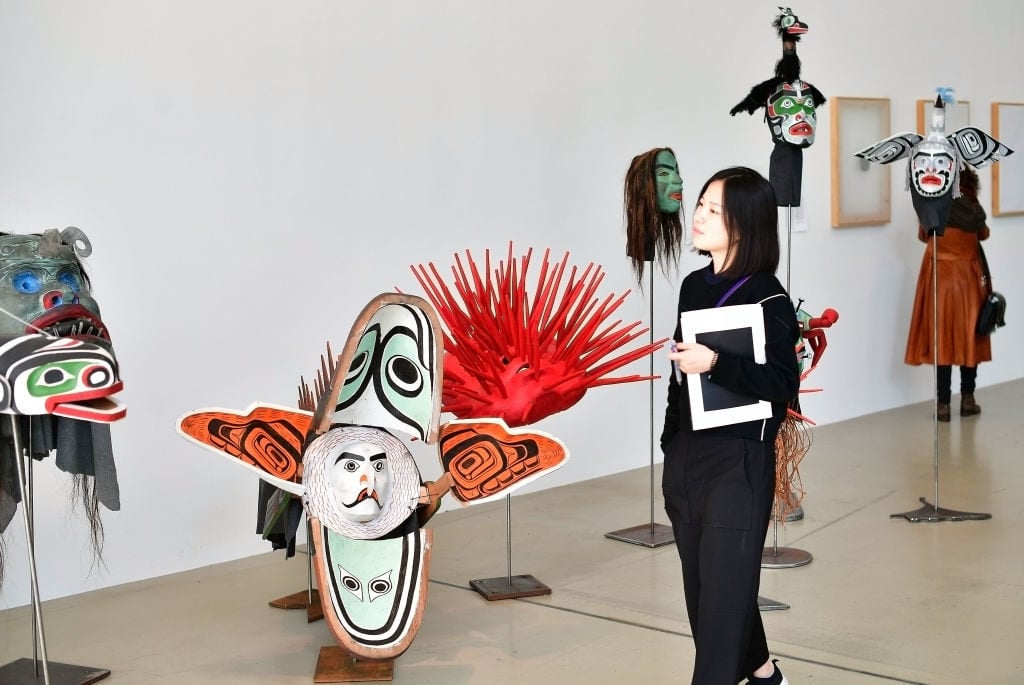
From highly political videos and performances to delicate and meditative collages, these are the best in show.

Ben Davis &
Hili Perlson

It may sound hard to believe for those who were there, but navigating through documenta 14 in Kassel in its opening days has proven even more challenging than in Athens, which was notably chaotic. It’s a big show that was coming together right up until the last minute, which means that information about its disorientingly diverse offerings wasn’t always where you needed it (some hastily printed out labels even included tracked changes from Microsoft Word, much to the bemusement of all the art writers scrutinizing them).
Bravely facing such nuisances, and the throngs of German and international visitors, our critics did manage to sort out some works that were worth highlighting at this, the most important of international art events, the culmination of five years of planning, trend-spotting, theorizing, and mapping contemporary art.
Below, some of the projects we’ll be talking about:
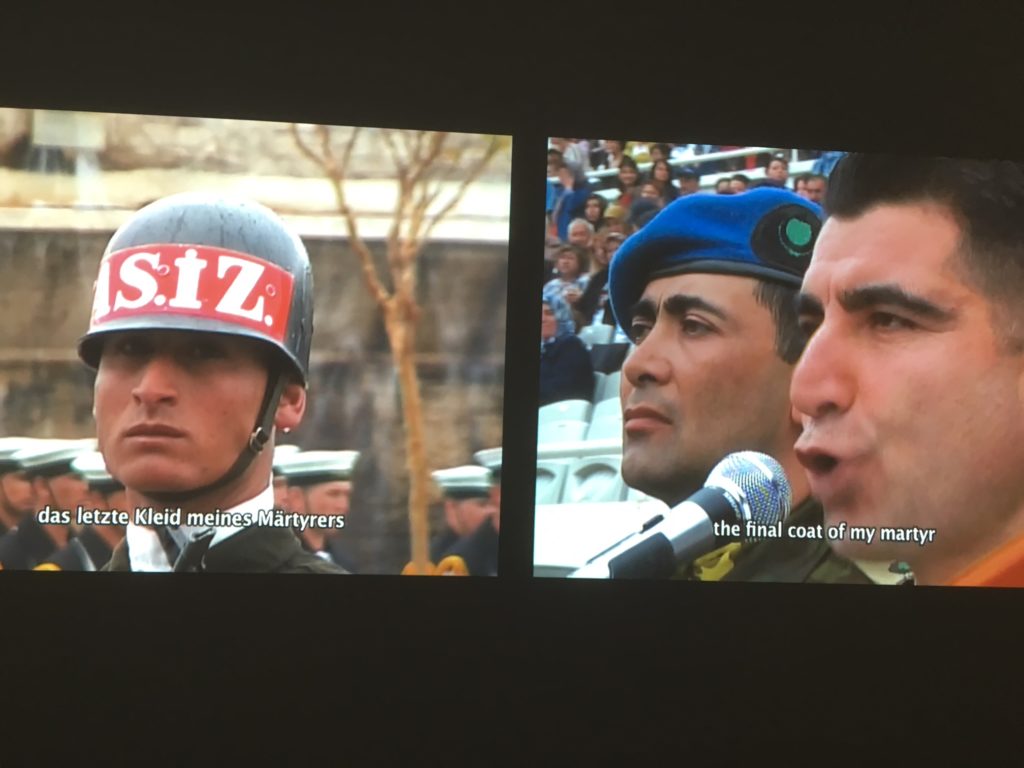
Köken Ergun, I, Soldier (2005). Photo Hili Perlson.
Although technically part of the collection of Greece’s National Museum of Contemporary Art (EMST) as part of a cultural exchange, rather than an official part of the documenta 14 program, the Turkish filmmaker’s video fits seamlessly into the questioning of national myths that informs some of the thinking behind Adam Scymczyk’s exhibition.
Here, Ergun casts a bystander’s glance at the state-controlled National Day for Youth and Sports in Turkey, celebrated on the day that marked the start of the Turkish independence war against the Allied Forces in 1919, led by Mustafa Kemal Atatürk. For several long minutes, the two-channel video juxtaposes the stern mien of a military school student with views of a man reading a poem about the virtues of men who fight, and die, for their countries. (The work is available on YouTube). –HP
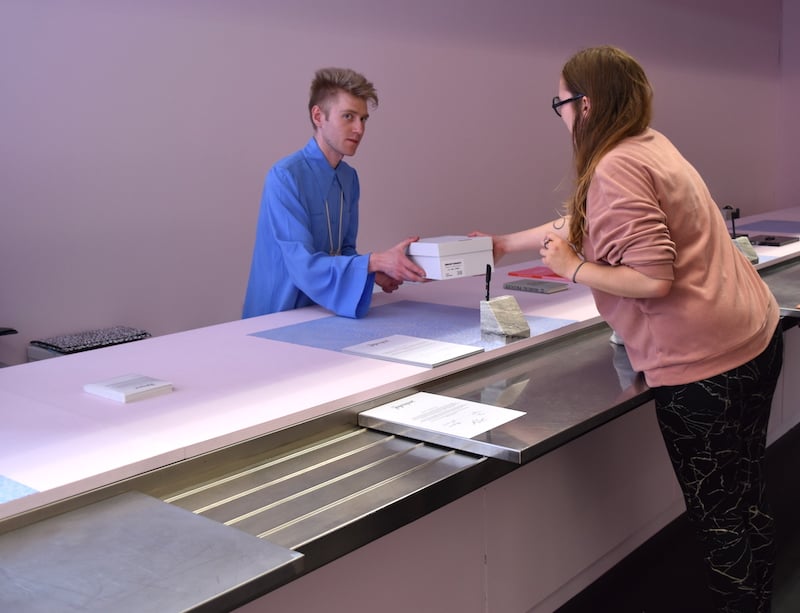
A documenta visitor grabs a pair of Borosana Labor Shoes. Photo Ben Davis.
I’m not 100 percent certain what to make of Haiduk’s multi-headed performance, which has literally set up shop on the upper level of the Neue Neue Galerie. It does very much fit with the ironically entrepreneurial turn of a lot of recent art. Mainly, what you need to know is that that she has contrived to resurrect the Borosana Labor Shoe, a relic of socialist-era Yugoslavia which was designed by women workers to be comfortable for a full nine hours of standing factory labor. documenta staff has been sporting the Borosana in Kassel and Athens, and visitors were snapping up the stylishly ostalgic footware, an example of a ready-to-wear readymade. –BD
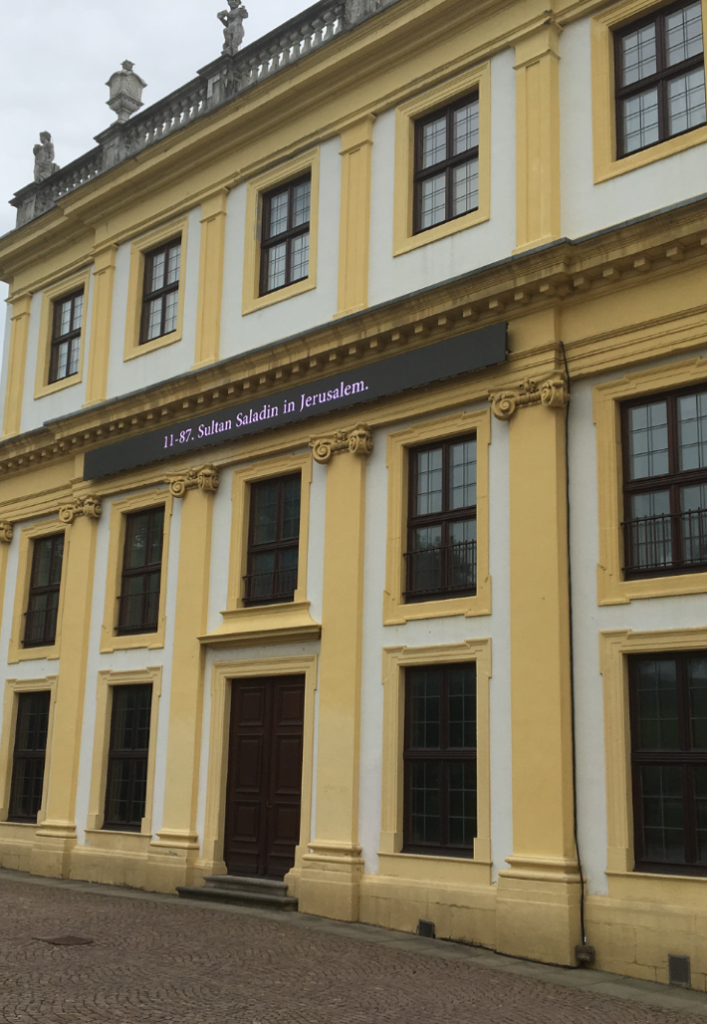
Romuald Karmakar, Die Entstehung des Westens: Von den Anfängen in der Antike bis zum Fall von Konstantinopel (2017). Photo Hili Perlson.
The award-winning French filmmaker Romuald Karmakar is one of the few participants at documenta 14 in Kassel to show in a location dedicated entirely to their work. Inside the Westpavillon of the Orangerie, the 18th-century summer residence of Karl I, Karmakar is showing two works that explore the end of the Byzantine Empire and the fall of Constantinople, pivotal events that changed the course of history.
Inside, the film Byzantion (2017) depicts two different groups of Greek-Orthodox priests singing Agni Parthene in the Greek and Slavonic versions. Meanwhile, an LED-ticker installed outside the quaint edifice shows regular “newsflashes” to report developments from the crusades, the siege of Jerusalem, and the capture of Constantinople—the capital of the Eastern roman Empire—by the Ottomans, in 1453. The simplicity of the two artworks only underlines their breadth. –HP
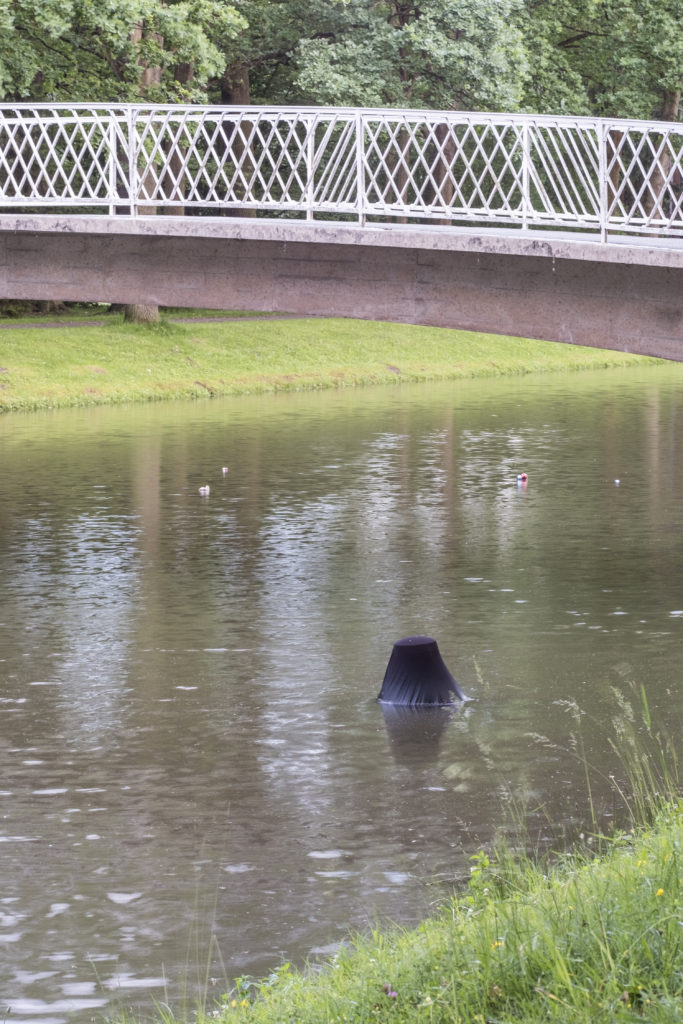
Benjamin Patterson, When Elephants Fight, It Is the Frogs That Suffer (2016–2017). Photo Mathias Völzke, courtesy documenta14.
Facing the Orangerie, the Karlsaue Park stretches across 1.5 square kilometers, with brooks and creeks running along its length. Speakers installed in the water under one bridge and camouflaged by bushes along its banks emit an audio piece by the American Fluxus artist and musician Benjamin Patterson, who died in 2016.
The (man-made) nature is invaded by a cacophony of croaking frogs, a “sonic graffiti” according to the documenta 14 text, which also explains that the piece, realized posthumously, also includes a chorus of humans trained to imitate frogs. Inspired by Aristophanes’s The Frogs (405 BCE) and one of Patterson’s own earlier works, Pond (1962), the aural installation—titled When Elephants Fight, It Is the Frogs That Suffer—also carries secret political messages. –HP
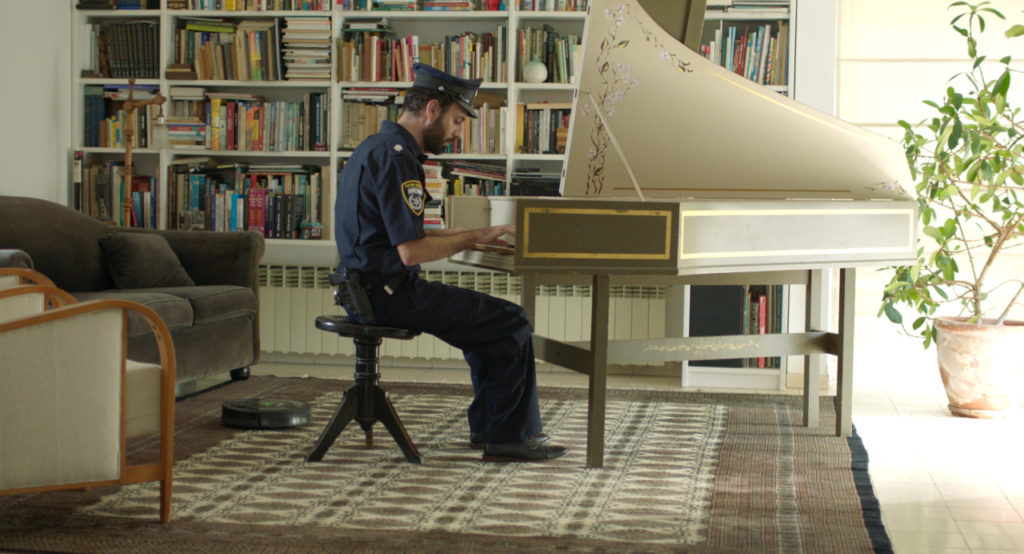
Roee Rosen, still from The Dust Channel (2016). Courtesy the artist.
The irreverent work of Israeli artist Roee Rosen—who showed one of his older pieces in Athens, Live and Die as Eva Braun (1995-7)—has thankfully become more refined over the years, and this co-production with documenta 14 is a fine example of his clever melding of humor, mostly of the darker variety, with harsh critique of Israeli society. A charming operetta (the original libretto is in Russian) depicts a bourgeois couple afflicted with a strange obsession with their vacuum cleaners. Scenes of domestic perversions are interrupted by clips from TV interviews, porn, and other artists’ works, all pertaining to vacuum cleaners (for example, Harun Farocki’s Inextinguishable Fire [1969]).
The couple’s compulsive need to get rid of specks of dust and sand becomes synonymous with xenophobia—the desert in the south of Israel is also the location of a detention center for political refugees not recognized as such by the state of Israel. Sharp-eyed viewers will spot, on the walls of the couple’s home, photographs by Israeli documentarist Ron Amir, shot outside the detention center Holot (and reviewed by artnet News here). –HP
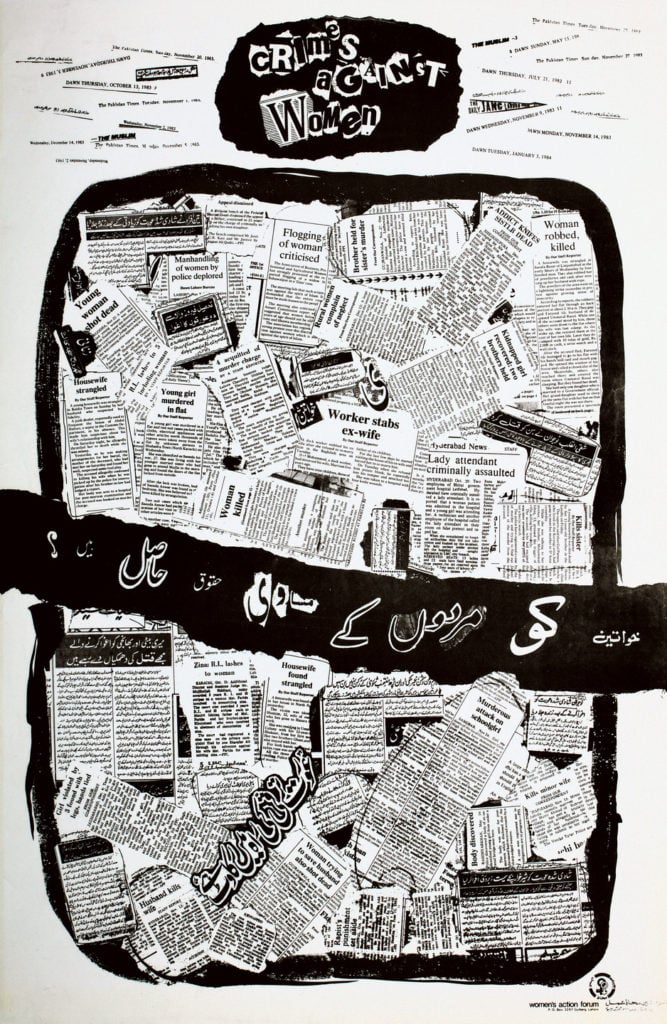
Lala Rukh, Crimes against Women (1985), poster for Women’s Action Forum campaign. Courtesy documenta 14.
Born in Lahore in 1948, Rukh’s work straddles the line between agitprop and rarified experimentation, and the cool thing about the small selection at the documenta Halle is that you can see how the two sides feed one another. On the one hand, she makes black-and-white abstractions that draw on calligraphy and musical notation. But, in her work for the Women’s Action Forum, she’s also produced a crackling series of activist posters, and you can see the visual intelligence she brings to the project, as in this image, which packs newspaper stories about crimes against women into one forceful call to action. –BD
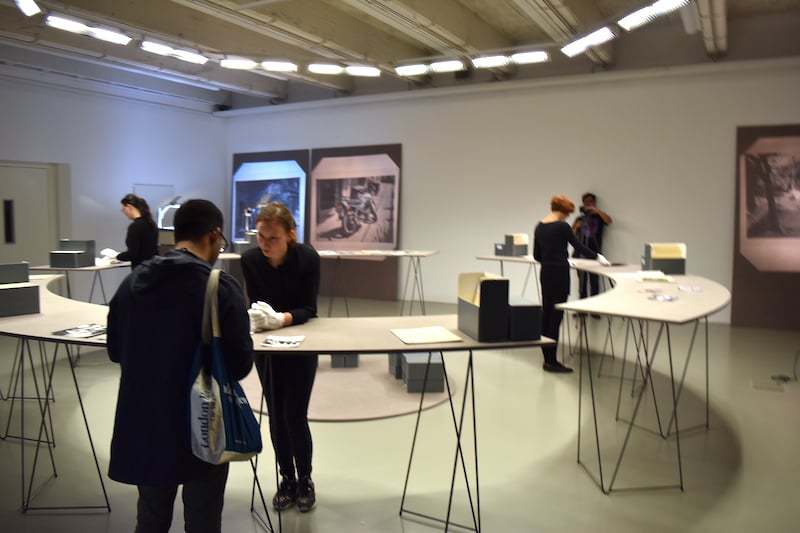
Performers working with an archive of images relating to recent Greek history for Stefanos Tsivopoulos’s The Precarious Archive (2015). Photo Ben Davis.
Here’s another work that sneaks onto our list via the EMST collection at the Fridericianum. For this hybrid art-research-documentary-performance project, Tsivopoulos (born in 1973) has assembled a substantial archive of political documents and photos relating to the dramas of recent Greek history. Displayed on a circular countertop and on overhead projectors, they are activated by performers, constantly shuffling them, replacing the images, and interacting with the archive and the public—a novel way to use live art as a way to literally “keep history alive.” –BD
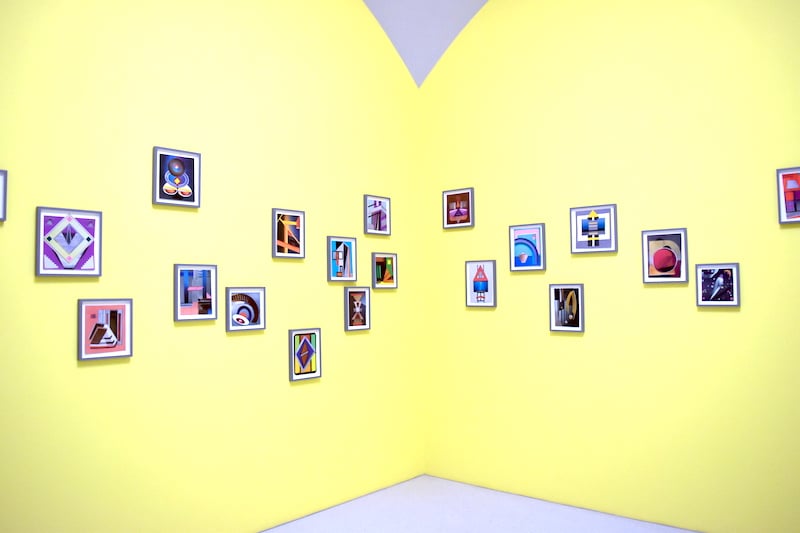
Elisabeth Wild, Fantasias (2016–17) at the Neue Galerie. Image: Ben Davis.
The appropriately named Wild has lived a life of many journeys: born in Austria in 1922, she fled the Nazis by moving to Argentina, then escaped Juan Perón’s Argentina in 1962, landing in Basel, before moving back to the Guatemalan highlands to live in 1996. The collages that she makes now are like the serene mental space one goes to in order to center oneself in difficult times: calm, colorful, and concentrated. At the Neue Galerie—with its many, many reflections on the haunted political moment—Wild’s Fantasias, scattered across a yellow wall, form a kind of meditation grotto. –BD